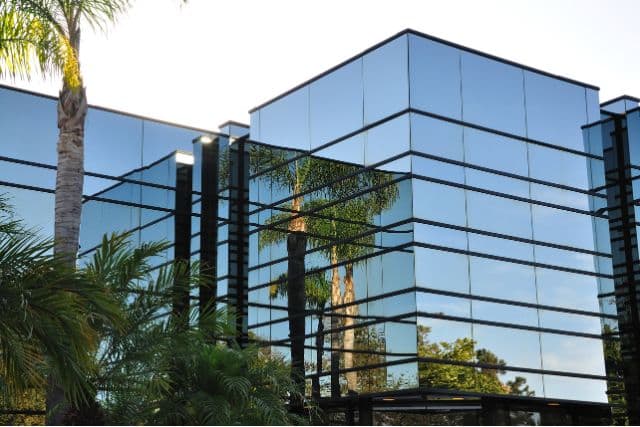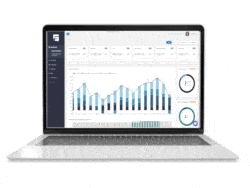As a commercial property owner or landlord, setting lease terms around common area maintenance (CAM) is a crucial part of your business. For each tenant, you must negotiate to decide what each party is responsible for and decide on a balance that is financially sustainable for everyone. Understanding key lease factors, like the difference between cumulative and compounded CAM caps, is vital for planning smart, profitable leases.
This article explores the major types of CAM caps, their differences, and their potential uses for commercial real estate owners. Read on to master this difficult aspect of commercial leases.
What are Common Area Maintenance Charges?
Common area maintenance charges are expenses passed on from a landlord to all the tenants of a building. They cover the upkeep of shared spaces like parking lots, lobbies, hallways, and elevators. Each tenant pays for a portion of the total common area maintenance expenses, usually based on the square feet they lease in the building, also known as their pro-rata share.
What are CAM Caps?
CAM caps limit the amount that landlords can increase what they charge tenants for common area maintenance each year. While landlords and owners can spend more than the capped amount on CAM or other improvements, that extra money will come out of their own pocket. Tenants usually aim to negotiate for lower caps to limit their expense burdens.
Caps usually apply to controllable CAM expenses. Controllable expenses are costs the landlord can influence, like landscaping, maintenance, snow or trash removal, and improvements. Uncontrollable expenses, on the other hand, include things like insurance costs and property taxes.
Why Should Landlords Understand the Different Types of CAM Caps?
The different types of CAM caps might not seem very different on the surface. But in reality, small changes in how the caps work have big impacts on your spending as an owner. Different types of caps can allow you more or less freedom to pass on costs, impacting your budget and schedule for repairs or improvements.
The two main types of CAM caps are cumulative and compounded. Let’s take a look at the distinction in more detail below to learn the benefits and drawbacks of each.
Cumulative Caps
Cumulative caps limit how much a landlord can increase charges from the previous year and allow the landlord to roll over unused increases. For example, if the cap is set at 5% annually, but you only increased expenses by 2% last year, you could add the unused 3% to this year’s increase for a total of 8%. For this reason, cumulative caps are more flexible for landlords.
Cumulative caps are either calculated year-over-base or year-over-year.
- Year-over-base: a constant increase each year. A 5% year-over-base cumulative cap means the expenses can increase by 5% of the original charge the first year, 10% of the original charge the next year, and so on.
- Year-over-year: the cap is applied to the actual amount spent per year. If the base is $100,000, a 5% cap equals $105,000. If only $102,000 are spent, next year’s 5% cap applies to that number, making it $107,100.
Compounded Caps
Compounded caps limit how much a landlord can increase charges from the previous year and do not allow the landlord to roll over unused increases. In this case, a 5% annual increase remains at 5%, even if you only increase by 2% in a given year. Tenants usually prefer compounded caps since they prevent large, unexpected increases in CAM charges.
Compounded caps are usually calculated year-over-base. However, for compounded caps, this means that each year’s cap is calculated as a percentage of the previous year’s cap. If the initial cap is 5%, the second year it is an additional 5% of that, or 5.25%.
A year-over-year compounded cap would add a percentage of the previous year’s cap to the previous year’s expenses. However, this type of cap is rare and can be confusing, making it difficult to apply properly.
Cumulative and Compounded CAM Caps at a Glance
| Calculation Method | Cumulative | Compounded |
|---|---|---|
| Year-Over-Base | – Unused increases do roll over – Annual cap: increases by a constant percentage of the original charge | – Unused increases do not roll over – Annual cap: increases by a constant percentage of the previous year’s cap |
| Year-Over-Year | – Unused increases do roll over – Annual cap: increases by a constant percentage of the previous year’s actual charge | – Unused increases do not roll over – Annual cap: increases by a constant percentage of the previous year’s cap applied to the previous year’s actual charge |
Keep Track of CAM Caps with STRATAFOLIO
Managing the correct CAM caps is one of the biggest challenges that commercial real estate owners and landlords face. Since tenants often negotiate terms, it’s likely that each of your leases is slightly different, meaning that you have to remember dozens or even hundreds of dates, rent payments, CAM charges, and cap agreements at a time.
But managing CAM caps doesn’t have to be such an enormous task. STRATAFOLIO allows you to store all your complex lease details in one convenient location. It even offers automations to ensure you never miss important dates like lease escalations again. STRATAFOLIO is designed with commercial real estate needs in mind; to learn what our software can do for your business, schedule a free demo today.






